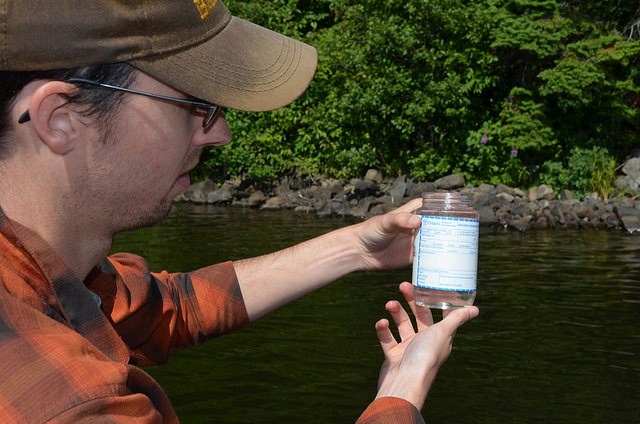THUNDER BAY — Water quality researcher Nathan Wilson is looking for participation from camp-owners in the Thunder Bay area and other parts of Northwestern Ontario.
Blue-green algae blooms have occurred with increasing frequency in recent years in area lakes, even in Lake Superior.
Wilson – a PhD candidate in Lakehead University's biotechnology program – is trying to get a better understanding of lake health conditions and how they might be changing.
A key objective of the research is to determine the extent to which the cyanobacteria which can cause blooms have always been present, and whether they are increasing.
Wilson has already identified a number of lakes that he plans to examine.
Now he's turning to "citizen science" to complement his work.
"The cyanobacteria is natural and has probably been here for a long time. The citizen science part of it is to bring people who might be out on those lakes the ability to start caring for their own lakes and being responsible for collecting data and monitoring the water they like to use and play on," Wilson said.
The work, which will help establish baselines for ongoing monitoring, could be as elementary as noting temperature variations in the water from spring to fall, and the duration of ice cover.
"Some of the observations that people can make are pretty easy....basic chemistry stuff, such as looking at the pH, and how much dissolved oxygen is in the surface water. That really gives us a better understanding of what the expectation is for the trophic stage of the lake," Wilson said.
He said the trophic state is affected by concentrations of phosphorus and algae.
"So if it's a really shallow lake and it's going to be really warm, there's a higher likelihood of the primary producers and the algae being more abundant, versus a deeper, bigger lake such as Dog Lake where you're expecting it to be colder for longer."
Wilson said citizen science observations could also focus on algae specifically, to help educate people on the differences between various algae and cyanobacteria, "to raise awareness that not everything you see on a lake is necessarily bad. It can be a natural process."
There's a challenge, he said, in trying to determine the extent to which area residents might be interested in participating.
Wilson speculated that some people might simply be willing to take monthly observations.
Others, however, may want to learn how to use a microscope to take photos of samples for uploading to an online database to determine if they are cyanobacteria or simply a green algae.
"We're still trying to figure how how best to move forward with this," he said.
Wilson applied for grant money to provide data-collecting kits for participants, but the initial proposal did not go through.
For now, he said, he's trying to find out the level of interest.
He hopes to hear from campers' associations or campers that might be willing to get together to participate at any level.
"If they tell us how they'd like to step into this, then we can cater to them with options for data collection that they would be comfortable with and could do for a minimal cost."
Wilson can be reached online.
